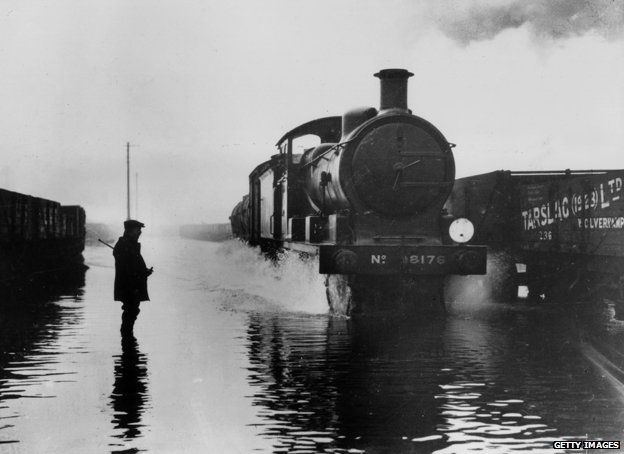Jobs and cargoes flooded the big factories and workshops along the Bow Back Rivers, but there were more traditional types of flood too. Heavy rain in Hertfordshire would send a surge of water down the River Lea. If this met rising tide water coming up the Thames, the rivers here could burst their banks and flood out homes and factories.
A particularly bad flood in 1928 caused damage all along the Thames, and put the Stratford Railway Works under water (where Westfield Stratford now stands).
The answer was to invest in flood defenses to control how much water flowed where. In 1934 Carpenters Road Lock was built between the Waterworks River and City Mill River.
The giant radial gates allowed the lock keeper to regulate the flow of water from Waterworks River into the City Mill channel, thereby keeping the water level on either side below the danger point. By using two gates, boats could pass through the without too much water being transferred between the two rivers. This ‘double radial’ lock gate reflects the need at Carpenters Road to allow river traffic while guarding against flood, and is unique in Britain.
Next: Canals vs. Trains



